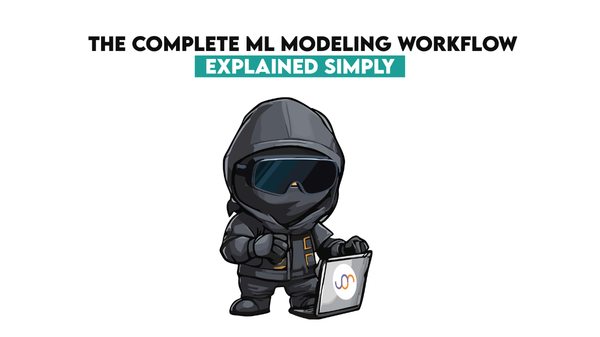Data Science Probability Interview Questions

Categories:
 Written by:
Written by:Vivek Sankaran
Top companies require top data scientists. The ones that are good at solving probability problems, which is what we’ll do here.
Probability is a part of statistics. But at the job interviews, this is often a completely separate topic. That’s why within the non-coding questions we have a category dedicated solely to the probability interview questions.
There are questions of different levels of complexity, but they all boil down to one basic concept: the probability definition.
What is a Probability?
A probability is defined as a ratio between the number of favorable and all possible outcomes or cases.
Mathematically, we can show it this way:
Let’s have a look at how you can apply this to something practical. Namely, to solve the probability interview questions.

To follow what comes easier, you might want to have a look at our guide explaining probability and other statistics concepts you need as a data scientist.
Data Science Probability Interview Question #1: Two Cards Same Suit
It’s a question by Meta/Facebook asking you the following:

Link to the question: https://platform.stratascratch.com/technical/2003-two-cards-same-suite
We’ll solve this probability interview question with the assumption that the cards are not replaced.
Intuitive Solution
Having in mind the probability definition, you can solve this data science probability interview question intuitively. There are four suits in the card deck. In every suit, there are 13 cards. That means there are 52 cards in total.
If you draw one card and have a look at its suit, the second card you draw has to be the same suit. Since you already drew one card, that means there are still 51 possible cases. There are also 12 favorable cases.
If you translate this to a formula, you get the following:
Mathematical Solution
The number of all possible cases expressed mathematically is:
This is because any two cards can be drawn from a 52-card deck.
To calculate the favorable outcome, we have to choose which of the four suits we want to double up. Once we have determined the suit, we can draw two cards from the same suit. In other words:
Put this into the probability formula and you’ll get:
Data Science Probability Interview Question #2: Where Are the Birthday People?
This one’s a little bit more difficult question. It’s asked by Yammer:

Link to the question: https://platform.stratascratch.com/technical/2028-where-are-the-birthday-people
Here we’re going to assume that there are 365 days in a year and k ≤ 365.
Unlike the previous question, where repetition was not possible, here the birthdays might fall on the same date.
For each person in the room, there are 365 possible scenarios. Therefore:
You would expect we’re going to find the favorable cases as a next step. We will, but not just yet. Since here it’s harder to find favorable cases than unfavorable ones, we’ll first find the unfavorable cases. From there on, it’ll be easy to find favorable cases.
Unfavorable cases mean none of the k number of people has the birthday on the same date. Let’s assume there are 365 seats in the room, each numbered with a calendar date:
| 1st Jan | 2nd Jan | 3rd Jan | |||
| 29th Dec | 30th Dec | 31st Dec |
Each person has to sit on a seat which will be numbered with their date of birth. The first person has 365 options. The second person can’t sit on the same seat as the first person, so there remain 364 options, and so on.
Mathematically this equals to:
From it follows:
Probability is, therefore:
Data Science Probability Interview Question #3: Two Out of Three Tails
The last probability interview question we’ll talk about is asked by Jane Street:

Link to the question: https://platform.stratascratch.com/technical/2285-two-out-of-three-tails
This question too can be answered intuitively and mathematically.
Intuitive Solution
You can quite easily visualize the scenarios. For example, if you flip four coins with two sides, the number of possible outcomes is:
The distribution can be shown in the following way:
| Scenario | # Cases |
| 4 Heads | 1: HHHH |
| 3 Heads, 1 Tail | 4: HHHT, HHTH, HTHH, THHH |
| 2 Heads, 2 Tails | 6: HHTT, HTHT, HTTH, THHT, THTH, TTHH |
| 1 Heads, 3 Tails | 4: TTTH, TTHT, THTT, HTTT |
| 4 Tails | 1: TTTT |
As you can see, there are really 16 possible outcomes. However, the question states there are at least two tails. That means that the first two scenarios are not possible. This leaves us with:
Of the remaining cases, the only favorable ones are where we get one head and three tails. Therefore:
Finally, the probability is:
Conclusion
The three questions we’ve covered give you a picture of what you can expect at the data science interviews when it comes to the probability interview questions. The solutions we provided are also an outline of how you should approach solving the data science probability interview questions.
This should be just a start for you to practice more of these questions. Solving many probability interview questions is the only way to increase, ahem, the probability of becoming a data scientist at the top company. These 30 probability and statistics interview questions that’ll give a good kick in that direction. You can always have some more in the non-coding questions section on our platform.
Share


